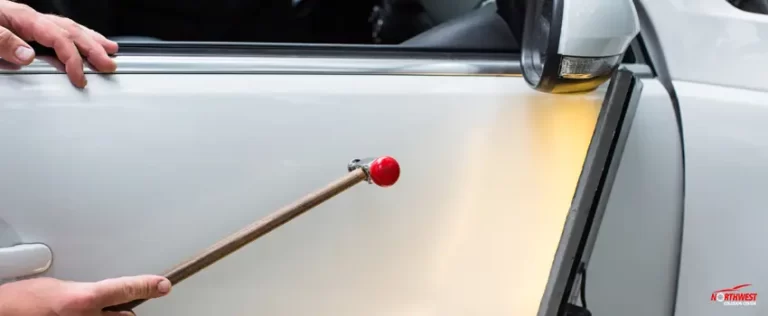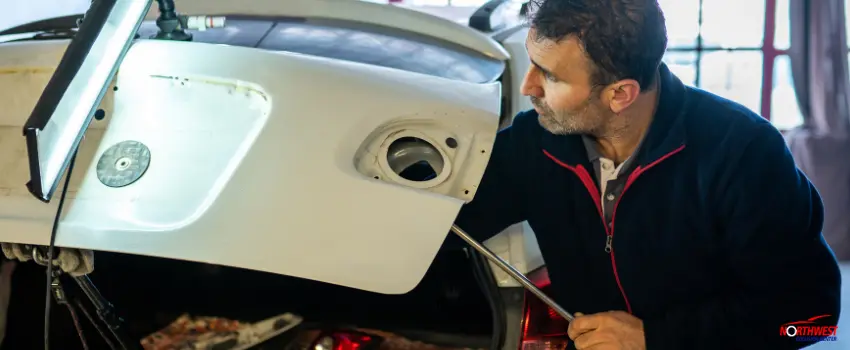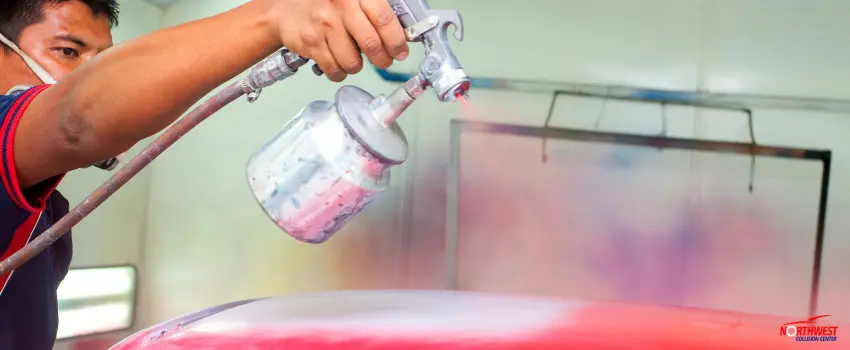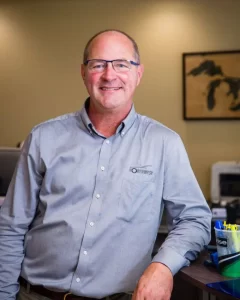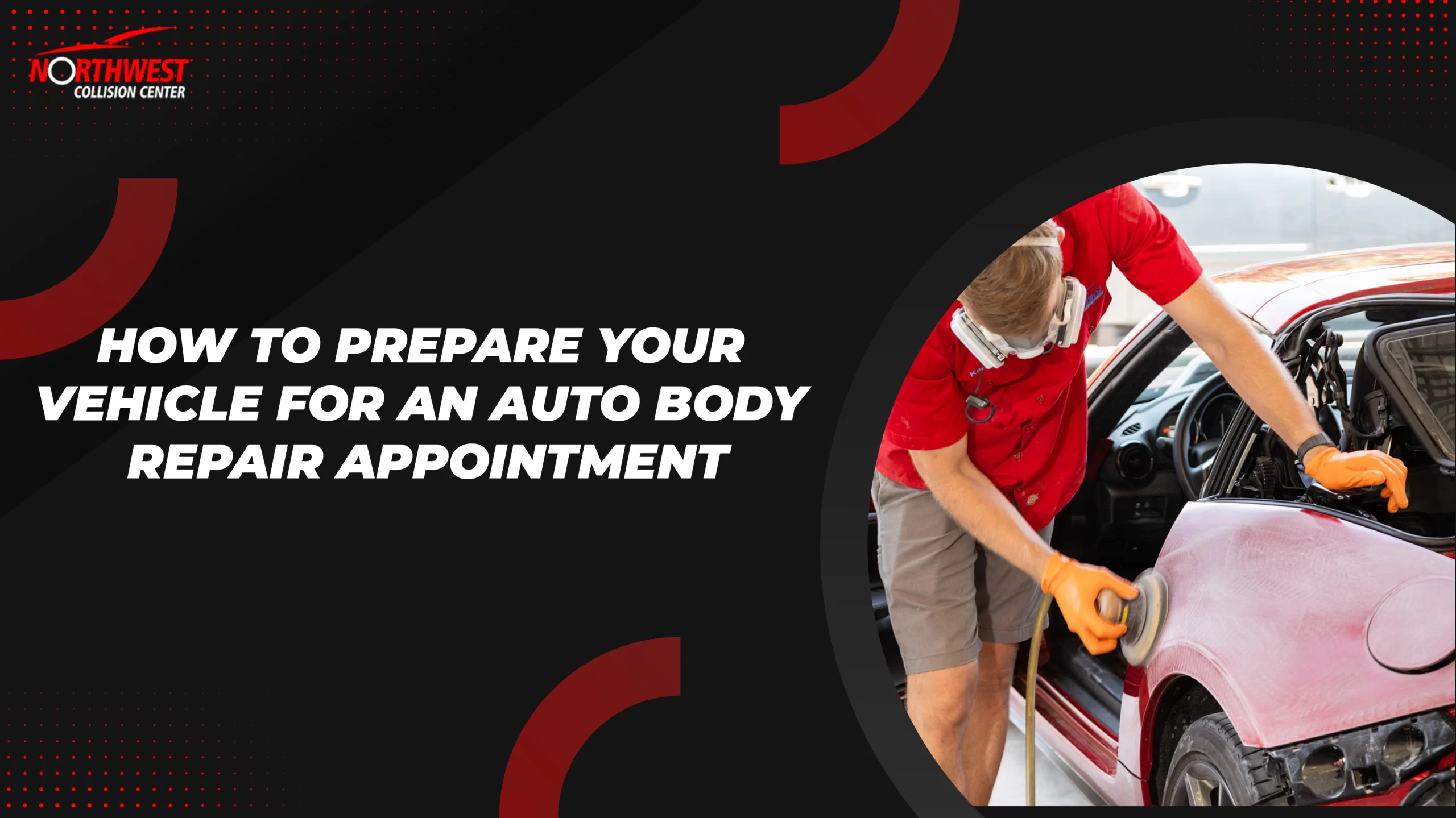Discovering even minor damage to your car’s exterior can be a source of stress and frustration, especially if it’s a noticeable dent. Fortunately, there is now a solution to this problem that many auto body experts recommend, called paintless dent repair.
Paintless dent repair, or PDR, is a technique that has the potential to repair 80% to 90% of all dents and dings. It involves removing the dent without sanding, filling, or repainting the affected area. If your vehicle has sustained minor damage from an accident, a car repair expert can help determine if PDR is the right option.
What is paintless dent repair?
This is a cost-effective and environmentally-friendly alternative to traditional body repair methods. With PDR, technicians use specialized tools to manipulate the damaged metal and turn it back into its original form.
The paintless dent removal process leaves the original paint intact and results in a seamless repair that is virtually undetectable. PDR is becoming increasingly popular in the auto industry, and with good reason.
Top 10 Questions About PDR
Below is a list of car owners’ most common questions regarding PDR.
1. How does PDR work?
PDR involves using specialized tools to massage the damaged metal back into its original form gently. Professional technicians use tools from their dent repair kit, such as rods and picks to apply pressure to the dented area from the inside, slowly pushing it back into place. The goal is to reshape the metal without causing any harm to the paint.
The process is delicate and requires a trained eye and a gentle touch. If too much pressure is applied, this can cause further damage to the vehicle.
2. What types of dents can a PDR work on?
Paintless dent removal can be used to repair a wide range of dents, from small door dings to larger creases. The key to a successful PDR is to ensure that the metal is not stretched or otherwise damaged beyond repair. Stretched metal may not be repaired using PDR.
3. How much does a typical PDR job cost?
The cost of a PDR job can vary depending on the damage’s extent, the dent’s location, and the technician performing the repair. On average, a small dent repair can cost anywhere from $50 to $150, while larger dents can cost upwards of $300 or more. In any case, this is typically cheaper than traditional body repair methods, making PDR a cost-effective option for many car owners.
4. Is PDR safe?
Paintless dent repair is not only safe, but it’s also effective. Since the process does not involve the use of fillers, sanding, or painting, it eliminates the risk of exposure to harmful chemicals and pollutants. Additionally, because the original paint is left intact, there is no risk of color mismatches or other cosmetic issues.
5. How long for a PDR job to be completed?
The length of time it takes to complete a paintless dent removal job can vary depending on the damage’s extent and the technician’s experience with the repair. On average, a small dent can be repaired in as little as 30 minutes, while larger dents can take several hours to remove. Still, the process is relatively quick and convenient, making it a popular option for people who need their cars repaired immediately.
6. Can a PDR remove all dent types?
PDR is not suitable for all types of dents. PDR may not be the best dent removal method if the metal is damaged beyond repair. Additionally, dent removal should not be performed if the scraped portion is situated in a difficult-to-reach area. When this is the case, you may have to get the dent removed through traditional means.
7. Will a PDR service leave any residue?
No residue will be left in a paintless dent removal process. Since filling and sanding are not used, the chances of residue buildup are eliminated. The repaired area will be smooth and seamless, with no visible signs of the repair made.
8. Will PDR require repainting?
PDR will not require repainting because the goal of PDR is to reshape the dented metal without causing any harm to the original paint. With this intact, the repair is seamless and hardly noticeable. This makes PDR the ideal alternative to traditional body repair methods.
9. Is PDR permanent?
Since PDR aims to push the dental metal back to its original shape, car owners can expect the repair to be permanent. However, over time, the metal may budge slightly due to changes in temperature or pressure. If this happens, the repair may need to be redone, although this is rare.
10. What factors can affect the longevity of a PDR?
One of the most crucial factors is the quality of the dent repair. If it’s poorly done, the repair may not hold up over time, causing the metal to either shift or become dented again.
The environment where the car is stored can also affect the result of the PDR job. Extreme temperatures, changes in pressure, and exposure to moisture can all affect the repaired metal, ultimately influencing its longevity.
Finally, it is important that you keep your car protected by moving away from possible collision situations that can cause dents or other similar damage. Repeated dent encounters can eventually weaken the repaired metal, and render it irreparable.
Key Takeaway
Paintless dent repair is an affordable and time-efficient way of restoring your car’s original appearance without spending much money or time at an auto body shop. If the paint on your car is intact and the dent isn’t too complicated, PDR could be the perfect solution.
However, you still have to ensure that you will get your money’s worth when considering paintless dent fixing for your vehicle. Not all car technicians are fully trained in this type of dent repair method. Given this, it’s best to look for a trusted auto shop that offers a wide range of repair services, including PDR’s.
Grab the best paintless dent repair as offered by Northwest Collision Center.
Don’t let minor car damage like dents stress you out. Contact Northwest Collision Center and see that dent removed without ruining your vehicle’s paint.
We use the latest technology at our auto body shop in Pinellas Park, FL, so our team of experts can help you determine the best repair option for you, including paintless repairs. Call us now and be ready to get back behind the wheel in no time.

